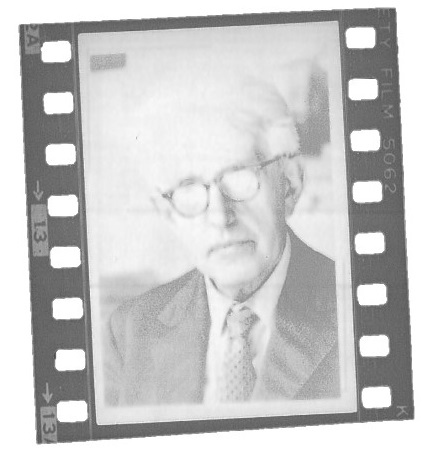What do you call a (new) New Testament?
Dr Hine writes:
Ronald Weitzman spent years corresponding with public figures and publishers in hope of persuading someone to publish Heinz Cassirer’s New Testament translation. Following his friend’s death in 1979, he exchanged letters with Yale, Oxford and Manchester University Presses. He corresponded with Mr Todd of Darton, Longman and Todd, with Mowbrays, and with Blackwell’s. One by one, these publishers declined. Their reasons were varied. Most voiced uncertainty about the market for a new translation.
In Autumn 1982, Weitzman began a correspondence with Thomas F. Torrance (1913–2007). He had read an essay of Torrance’s, and felt this Scots churchman would be open to hearing more about Cassirer’s work. Weitzman may also have suspected Torrance’s influence in Scottish publishing: Tom Torrance advised the Handsel and Scottish Academic Presses, and Weitzman’s cache of correspondence reveals that both had been mentioned to him as possible candidates for his cause.
Torrance wrote back with great enthusiasm. He recalled meeting Cassirer at Oxford in 1939, a detail Weitzman does not seem to have anticipated. The two men had met again in later life, and corresponded, assuming Torrance’s account to be accurate. (Cassirer is elsewhere regarded as a poor correspondent, who commonly failed to answer letters.)
Torrance’s enthusiasm was predictable. In the essay that had moved Weitzman to sit down at his typewriter, Torrance had asked: “How can we see Jesus the Jew . . . without the use of Jewish eyes?” Asking to see Cassirer’s work, Torrance returns to that expression, keen to read the New Testament “through Jewish eyes”. Having once read it, he ventured so far as to suggest calling it “the Jewish New Testament”. This, Torrance explained, was its distinctive feature, and could improve its marketability.
As it happened, in late 1982 United Bible Societies translation consultant Paul Ellingworth was already advising on a different Jewish New Testament. Jewishness, it turned out, was not quite the unique selling point that Torrance hoped. Reading Cassirer’s text, Ellingworth reckoned it was less emphatically Jewish than Weitzman suggested.
Olive Cassirer, Heinz’s widow, rejected Torrance’s suggested title. The name finally chosen was her and Weitzman’s choice: God’s New Covenant (Eerdmans, 1989). Torrance’s sales pitch remained a vital part of the text’s marketing. The following quotation appears on the dustjacket:
We need Jewish eyes to help us read and understand the Gospels and Epistles in a faithful way—and that is precisely what Heinz Cassirer does for us.
–Thomas F. Torrance, University of Edinburgh.
This wording replicates a view Torrance had taken before he read Cassirer’s work. Was it the translation that would sell, or the mere concept of it? Should reading with “Jewish eyes” be so easily conflated with “Jewish-Christian eyes”? (The latter expression is found in the subtitle of Olive and Weitzman’s first counter-proposal, and more closely reflects Cassirer’s self-understanding.)
As Cassirer’s text approaches republication in the Digital Cassirer Collection, one may also reflect on a question raised by Ellingworth. Weighing up Cassirer’s turns of phrase in the “Letter addressed to Readers of Hebrew Descent”, he asked himself: Can the Jewishness of the New Testament ever be adequately reflected in translation? Translating Covenant instead of Testament might help.
Image: Part of the cover design sketched by Ronald Weitzman; from the Sheffield Cassirer collection.
